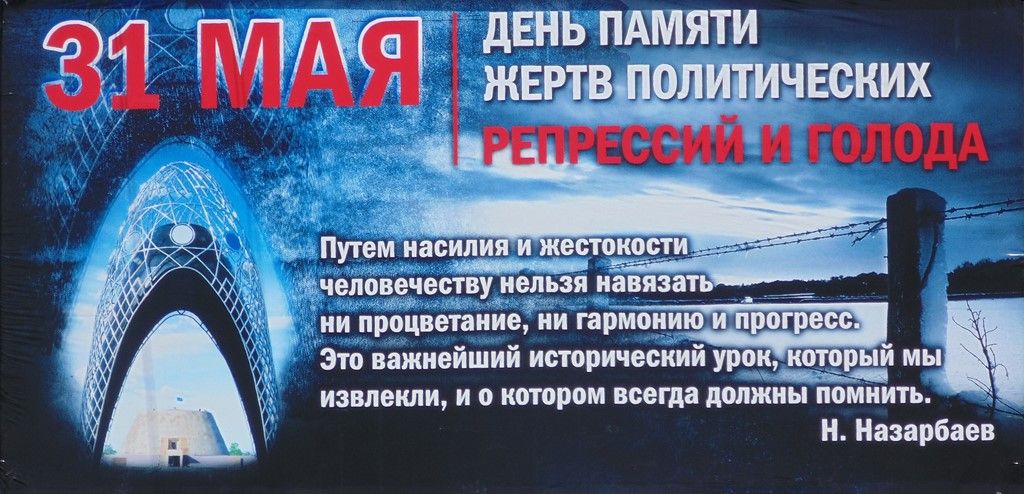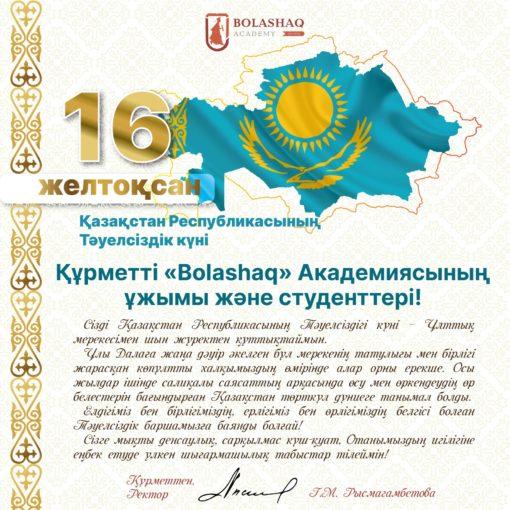May 31 is a day to commemorate one of the most tragic pages in Kazakhstan’s history – mass political repression and a terrible famine that caused the death of millions of people. In memory of numerous victims in our country many events are held, exhibitions are opened in museums, flowers are laid on memorials and new data are published. We do this not only out of respect for the memory of the victims of repression and hunger, but also so that those terrible days will never happen again.

Any revolution takes place on the wave of populist promises of “everything at once”, in order to achieve the goal, revolutionaries promise every conceivable and inconceivable good. But the hangover can be brutal, and the greater the shock, the greater the payback for naive trustfulness. The October Revolution came on a wave of Bolshevik slogans “Factories for workers, land for peasants”. Even Soviet scientists recognized the fact that to reach the level of economic, and especially industrial development of the pre-revolutionary period in 1913, was possible only by the end of the 30s. And that price was terrifying. The endless struggle with dissent, the “law of three spi,” the terms for being late for work, were nothing like the fairy tales of owning factories and peasants’ land. And after the decree on the destruction of unreliable elements, entire strata of people were eliminated, such as merchants, Cossacks, wealthy peasants, managers at industrial enterprises and even many prominent revolutionaries. The revolution devoured its children as well…
Kazakhstan is a victim of terror.
The whole of Kazakhstan has turned into a kind of huge prison, because during the years of repression more than 5 million people were exiled to the camps established in our country. And according to other data, the total number of convicts is much higher than this figure. But this does not mean that only people were exiled to Kazakhstan. In the Republic itself in the period from 1921 to 1954 100 thousand people were convicted, and 25 thousand of them were sentenced to the highest punishment – execution.
By the end of the 20s the state hysteria had reached its limit. In 1928, mass arrests of former Alash Orda figures, primarily of such prominent leaders as M. Dulatov, M. Zhumabaev, J. Aimauytov, began.
As on the territory of the whole Soviet Union, NKVD launched a vigorous activity in Kazakhstan. 183 different structures were “discovered”, with the total number of “agents” of 3720 people. For 33 years from 1920 to 1953 about 110 thousand people were subjected to political repressions, about 18% of all Kazakhstan party organization were declared enemies of the people.
In 1937-1938, A. Bokeikhanov, A. Baitursunov, M. Dulatuly, A. Yermekov, H. Dosmukhameduly and many other prominent figures were accused of nationalism and espionage. At the peak of repressions in 1937 in Kazakhstan, the number of arrested reached 105 thousand people, of which about 22 thousand were sentenced to execution. Such a number of repressed for our small population of the republic has caused irreparable harm in demographic and intellectual potential.
Hunger
In the early 1930s, Kazakhstan experienced one of the most tragic pages in its history – the Great Famine of 1932-1933. Despite the fact that the famine in Kazakhstan is considered to be part of the all-Union famine that gripped the entire USSR at that time due to the policy of forced collectivization, the Kazakh people suffered from famine like no other…
The famine of 1932-1933 is sometimes called “Holoshchekinsky”, in 1925-1927 the famous Bolshevik leader F. I. Goloshchekin held the so-called “Little October” in the Kazakh region. People were taken away from their cattle, their property and sent under police escort to “settling points”, where people simply died without a livelihood. By 1933, about one tenth of the 40 million cattle remained.

The Kazakh people suffered the worst losses as a result of the famine that befell the republic in 1932-1933. From the famine and related epidemics, as well as the constantly high mortality rate, Kazakhs lost 2 million 400 thousand people – 49% of the total number of Kazakhs in those years.
Trying to avoid a heavy fate, many Kazakh families tried to leave the territory of the Republic, only from the beginning of 1930 to mid1931, almost 300 thousand farms left the territory of Kazakhstan. Most of the population that fled from the Soviet power moved to the territory of China, Iran and Afghanistan. In total, 1.3 million people left the republic during the years of famine, 670 thousand of them irretrievably.
Famine of 1932-1933 ruined Kazakhstan, led to unprecedented victims and irreparable losses. And remembering those years, every citizen of Kazakhstan should understand the scale of this tragedy and its consequences for the history of his country.





